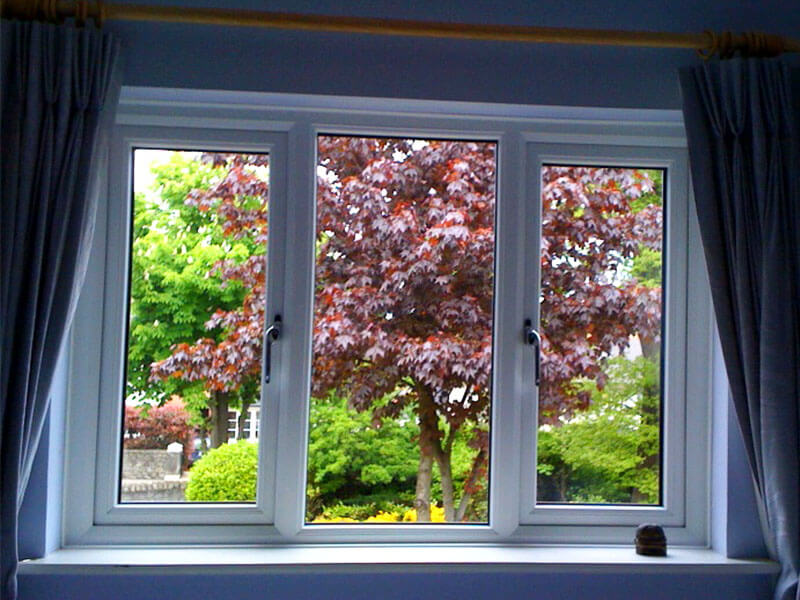Double glazing refers to the construction of windows and doors that consist of two panes of glass separated by a space filled with air or gas, designed to provide enhanced thermal insulation and noise reduction. This technology has gained popularity in residential and commercial constructions due to its numerous advantages over single glazing. This report delves into the benefits, technologies, applications, and considerations associated with double glazing, providing a comprehensive overview of its role in modern architecture and energy efficiency.
1. Understanding Double Glazing
Double glazing typically consists of two panes of glass sealed together, creating an insulating barrier. The space between the panes can be filled with air, argon, or other gases, which enhances thermal performance. The thickness of the glass and the size of the gap can vary based on the application and desired performance characteristics. The primary functions of double glazing are to reduce heat transfer, minimize noise pollution, and increase security.

2. Benefits of Double Glazing
2.1 Energy Efficiency
One of the most significant advantages of double glazing is its ability to improve energy efficiency. By reducing heat loss in winter and minimizing heat gain in summer, double glazed windows can lead to substantial savings on heating and cooling costs. According to various studies, double glazing can reduce energy bills by up to 20-30% compared to single-glazed windows.
2.2 Noise Reduction
Double glazing effectively reduces external noise, making it an ideal choice for homes located in busy urban areas or near transportation hubs. The space between the glass panes acts as a sound barrier, significantly lowering the amount of noise that enters the building. This feature enhances the comfort and tranquility of indoor environments.
2.3 Increased Security
Double glazed windows are more difficult to break than single-glazed windows, providing an added layer of security for homes and businesses. The toughened glass used in double glazing is less prone to shattering, and the sealed unit is more challenging to tamper with, deterring potential intruders.
2.4 Condensation Prevention
Condensation can be a significant issue with single-glazed windows, leading to dampness and mold growth. Double glazing minimizes condensation by maintaining a warmer interior surface temperature, thus reducing the likelihood of moisture build-up.
2.5 Environmental Impact
By improving energy efficiency, double glazing contributes to a reduction in carbon emissions. Buildings with double-glazed windows require less energy for heating and cooling, which translates to lower fossil fuel consumption and a smaller environmental footprint.
3. Technologies Behind Double Glazing
Double glazing technologies have evolved over the years, leading to various types of insulated glass units (IGUs) that enhance performance.
3.1 Gas-Filled Units
Many Double Glazing St Albans-glazed units feature argon or krypton gas between the panes, which provides superior thermal insulation compared to air-filled spaces. These gases are denser than air, reducing heat transfer and improving insulation efficiency.
3.2 Low-Emissivity (Low-E) Glass
Low-E glass is treated with a special coating that reflects heat back into the room while allowing natural light to pass through. This technology enhances thermal performance and can significantly improve energy efficiency, particularly in colder climates.
3.3 Triple Glazing
For areas with extreme weather conditions, triple glazing, which consists of three panes of glass, may be employed. This configuration provides enhanced insulation but can be heavier and more expensive than double glazing.
4. Applications of Double Glazing
Double glazing is widely used in various contexts, including:
4.1 Residential Buildings
Homeowners often choose double glazing for new builds and renovations to improve energy efficiency, reduce noise, and enhance security. Many local building codes now require double glazing in new residential constructions.
4.2 Commercial Properties
Businesses benefit from double glazing through reduced energy costs and improved employee comfort. It is particularly advantageous in office buildings, retail spaces, and hotels, where noise reduction and climate control are essential.
4.3 Historical Buildings
Innovative double glazing solutions are available for historical buildings, allowing for the preservation of original aesthetics while enhancing energy efficiency. Secondary glazing can be added to existing windows without compromising the building's historical integrity.
5. Considerations When Choosing Double Glazing
While double glazing offers numerous benefits, several factors should be considered when selecting the right system:
5.1 Cost
The initial cost of double glazing can be higher than single glazing. However, the long-term savings on energy bills and increased property value often justify the investment.
5.2 Installation Quality
The performance of double glazing is highly dependent on proper installation. Poor installation can lead to issues such as air leaks, condensation, and reduced effectiveness. It is crucial to hire experienced professionals for installation.
5.3 Maintenance
Double-glazed windows typically require less maintenance than single-glazed windows, but periodic checks are necessary to ensure seals remain intact and that there are no signs of condensation between the panes.
6. Future Trends in Double Glazing
The double glazing industry is continually evolving, with innovations aimed at improving performance and sustainability. Future trends may include:
6.1 Smart Glass Technology
Smart glass, which can change its properties based on environmental conditions, is gaining traction. This technology can improve energy efficiency and comfort by adjusting transparency and heat transfer properties.
6.2 Sustainable Materials
The use of sustainable materials in the production of double-glazed windows is becoming increasingly important. Manufacturers are exploring eco-friendly framing materials and coatings to reduce environmental impact.
6.3 Enhanced Aesthetics
As design trends evolve, manufacturers are focusing on creating double-glazed windows that offer both performance and aesthetic appeal. This includes slimmer frames and a wider variety of styles and finishes.
Conclusion
Double glazing represents a significant advancement in window technology, offering numerous benefits that enhance energy efficiency, noise reduction, security, and overall comfort. As the demand for sustainable building practices continues to grow, double glazing will play a crucial role in modern architecture. By understanding the technologies, applications, and considerations associated with double glazing, homeowners and builders can make informed decisions that lead to improved living and working environments. The future of double glazing looks promising, with ongoing innovations poised to further enhance its performance and sustainability in the years to come.









